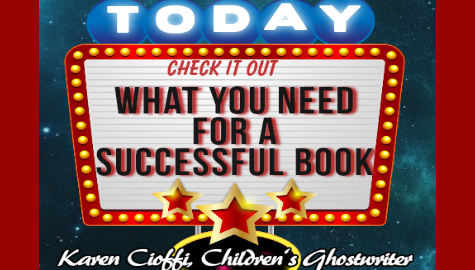
There are a number of elements and strategies an author needs to write and publish a successful children’s book. This article covers five of them.
While success can mean different things to different people, a successful book is one that kids will love to read and hopefully learn from. A successful book is one that subtly leaves a lingering message (the take-away value) and meets the standard industry guidelines.
A successful book is one that you’ll be proud to be the author of.
Let’s go over the five children’s author must-haves.
- A quality children’s book.
The very first think is to write a quality book. But how do you do this?
Anything worthwhile doing is worth doing right. So, to write a quality book, you should take the time to learn how to write a story.
There is enough information online including articles, courses, and workshops, to help you learn the process.
The basics are to be sure it has a beginning, middle, and end.
It should have engaging characters, and the protagonist should grow in some way. It should also have a take-away value.
There is also editing and proofreading. You can self-edit and proofread or have the story professionally edited to ensure what you missed is found and corrected.
One of the best ways to know if you’re on the right track is to read recently published books by major publishers in your genre. Dissect them. Figure out why they work.
Another aspect of a quality book is to have it professionally formatted.
- A great book cover.
The first thing a reader will see is the cover of your book, and it’s usually the cover that draws the readers in and motivates them to buy the book.
Don’t skimp in this area. Get a professional cover. It’s definitely worth the investment.
If your budget allows, look for a professional illustrator or designer. A professional cover can be anywhere from $200 to $450, possibly more.
There are also a number of publishing services that offer book cover templates, and if this is all your budget allows, be sure you can tweak it to make it unique. You don’t want the same cover that thousands of other books have.
You won’t need to worry about the book cover if you traditionally publish.
- Professional illustrations.
Have you seen self-published picture books and wondered how the author could use substandard illustrations? Using professional-grade illustrations is a must for picture books, chapter books, and any other genre in which you’ll have illustrations.
You can have an incredible story, but if the illustrations stink, you’ve degraded your book.
Ask around for qualified illustrators or do an online search. Be sure to look at samples and pay attention to the people in the illustrations.
I give my clients a list of illustrators that my other clients have vetted.
I’ve noticed lately that some illustrators are great at inanimate objects, animals, and even fantasy characters, but their ‘people characters’ are of poor quality.
The ‘people characters’ have the same positions or facial expressions with very minor tweaks. Or they will lack movement.
Be careful. Do your research and find a professional illustrator.
Good illustrations can run from $90 to $350 per interior illustration, sometimes more.
And be sure you own the rights to the illustrations.
- The ISBN
You should have an ISBN if you intend to sell your book through retailers.
The International Standard Book Number is needed for print books and identifies your book. It’s required by most retailers. It provides retailers with your book’s edition, publisher, format, and metadata. All of this helps readers find your book.
The 13-digit number is unique to each book and is placed on the back of your book by the book designer. It will be in the form of a barcode.
- The LCCN.
The Library of Congress Control Number allows libraries all over the U.S. to categorize your book if they’re interested in it.
Having your book in the library system is a big deal, and getting a number is free. It’s a no-brainer.
- An author website.
It seems a lot of new authors don’t think they need an author website.
Truth is, you do.
Think of it as your online personal address. Social media pages are not the same.
Your author website is where you’ll bring traffic and build your email subscriber list, which will help you sell your books.
You can even sell your books through your author website.
To find out why the author website is so important, check this out:
The Author Website – Do You Really Need One?
There are other important must-haves for a successful book, but these are some of the basics.
And always remember to add metadata (descriptions, keywords, categories) wherever possible. Always think marketing.
I’m a working children’s ghostwriter, rewriter, editor, and coach. I can help turn your story into a book you’ll be proud to be the author of, one that’s publishable and marketable.
OTHER HELP I OFFER:
HOW TO WRITE A CHILDREN’S FICTION BOOK
A DIY book to help you write your own children’s book.
PICTURE BOOK AND CHAPTER BOOK COACHING
Four to ten-week coaching programs.
Creating An Author Online Platform
Step-by-step with a former WOW! Women on Writing author online platform instructor
You can contact me at: kcioffiventrice@gmail.com.

